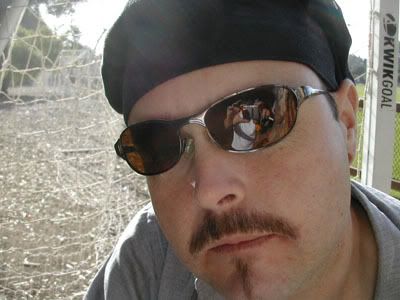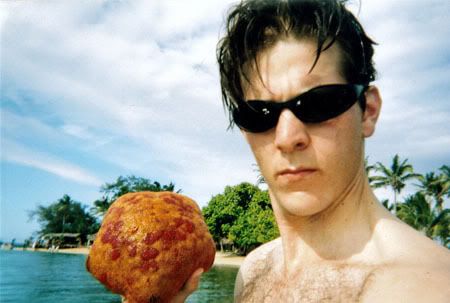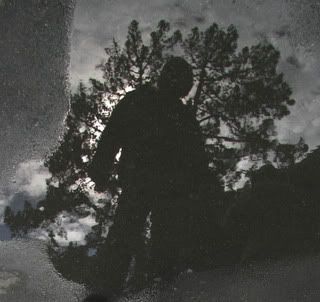
The city of Edo (modern day Tokyo) was a deliberately planned environment. Attention was paid to how it would grow, and how it grew - and eventually, it grew out of control. The face of the city changed drastically as it blossomed, and the many fires, or “flowers,” of Edo helped to make that possible.
The “Seeds” of Edo
When the powerful and patient warlord, Tokugawa Ieyasu, finally seized his opportunity to take administrative control of Japan, he knew just what to do. By waiting until after the death of his rival for autonomous power, Toyotomi Hideyoshi (1537-1598), and then slaughtering the armies that supported him at the consequent battle at Sekigahara (1600), no more daimyo warlords would be able to stand in his way. Ieyasu was Shogun. De facto ruler of Japan.
When Tokugawa Iyeasu relocated to Edo in 1590 it was a swampy little fishing village, marked by a neglected fortress built by Ota Dokan in the 15th century. But it had potential. It was far enough from Kyoto to start a new shift in government.
In essence, Edo was re-born as a dream. It was an intentionally planned metropolitan seat of power and protection, well positioned both spiritually and geographically, and it was built to grow in a particular fashion. The city’s inhabitants would adhere to the strict social codes and standings within the hierarchal order of the shogunate regime.
The civic development of Edo would be paid for by the daimyo warlords of Japan. Each of the wealthiest families would eagerly give a large portion of their resources to the construction effort of the Shogun’s castle, as well as their own grand estates in Edo. All of these new homes were situated close to the main compound where Tokugawa and his entourage lived, so that strict levels of social control could be enforced, collectively.
“Alternate attendance” further pledged daimyo allegiance to Tokugawa rule, and kept them nearly incapable of becoming wealthy or powerful enough to pose a threat to the regime. This would also ensure his lords that the fate of his domain and family would be shared by the fate of their own.
“The Flowers of Edo”
The population in Edo grew fast, and most of the homes in Edo were made of wood and other combustible materials. They were often packed very tightly together, with little or no space between them.
Fires broke-out regularly, especially in the Low City. Many were far-reaching and often destroyed much of the city, causing many fatalities. About 100 fires broke-out during the 15 generations of Tokugawa rule in Edo Japan. These fires were often started in the most densely populated areas of the city during the dry winter season, when Edoites warmed their homes with burning charcoal.
“The city was proud of its fires…and occurred so frequently and burned so freely that no house in the low city could expect to last more than two decades.”
As devastating as many of these fires were, they were often seen with a bit of irony, not only as deadly catastrophes that left Edo and its inhabitant in ruins, but also as catalysts of civic change and the cause of redevelopment and reconstruction, which often addressed the practical and social needs of the changing times.
“Edo no hana” (the flowers of Edo) became a concurrent theme throughout the history and fine arts of Japan.
A “Flower’s” Bloom
“The Great Fire of Meireki turned Edo into ‘Great Edo”’
Reports of arson were not uncommon in early Edo. On the 18th day of the 3rd year of the Meireki Imperial Era, an uncontainable fire began to spread wildly from the Hongo district in the Low City, up toward Kogimachi and Edo Castle, consuming the property and lives of many on its way.
Otherwise known as the Furisode fire, it was the worst in Japanese history at the time, destroying 60-70% of the city over three days in 1657. The Meireki fire is estimated to have claimed the lives of over 100,000 people.
Tokugawa Ietsuna himself, the 3rd shogun, barely made it out of his keep alive, after the flames breeched his powder magazine and caused a horrific explosion.
In the days following the Meireki fire, people gathered the corpses of their family members and neighbors. Many of the bodies were sent down the Sumida River to Honjo, for a mass burial. It is at this site that “Edo-in,” or the Hall of Prayer for the Dead was built as a historical marker, in memory for those who died in the consuming inferno.
In the weeks following the blaze, and for nearly 2 years after, reconstruction efforts became a high priority for the people of Edo. The shogunate utilized this opportunity to re-organize his city, and address various social and practical civic situations, particularly concerning the degree of vulnerability Edo had displayed to the Meireki fire, and how it could spread so rampantly within Edo.
Alternate attendance was temporarily suspended, and about 900 tons of near-burnt rice was dispensed to encourage the reconstructive effort.
Taking fire safety and wind factors into account, entire districts were re-planned for safety. Also many daimyo homes were relocated further away from the castle, so as to serve as natural fire breaks. Homes in Edo had to be built in adherence to strict code, and were no longer allowed to display lavish ornamentation and exquisite entryways, which were usually made of highly flammable materials such as wood and bamboo.
Many streets were widened, especially in the Low City, and the far-reaching suburbs of Edo became the city’s outer-limits, decongesting the city to some degree. Old shrines and warrior centers were moved away from the more densely populated areas for protection.
Because of these changes in scope and design, future fires, or “flowers”, of Edo, would be far less devastating than they might have been, at least for the immediate future.
A “Flower” for Love
The best known arsonist in Japan was a 17-year-old girl, Yaoya Oshichi, who lived in Edo with her greengrocer family toward the end of the 17th century.
In late 1682, she and her family fled from the city as a wild blaze approached her neighborhood. They sought refuge in Enjoji temple, where she fell in love with a boy that she met, who lived there under the care of its resident monks.
Destroyed in the fire, her family home had to be rebuilt, and upon its completion, Oshichi worried that she may never see her newfound love again. She figured that only a tragedy such as the one that first brought them together could bring them together again.
Early in the following year, Oshichi set fire to a building, hoping to able to see her distant love again. The blaze she started grew out of control and destroyed much of the city.
In Edo, arson was capital crime, rightfully so, as the city was prone to massive death and destruction by such acts. Oshichi was dragged through the streets of Edo in shame, and publicly executed for her disregard for safety and the law.
Yaoya Oshichi was pitied by some of the citizens of Edo because of her youth and beauty, but a great deal more were outraged. Either way her story is an immortalized legacy within Japanese culture and is the focal point of many kabuki plays, books, and woodblock prints.
Hikeshi: Tending to the “Flowers of Edo”
“Sonae areba ureinashi” is a Japanese proverb which is similar to “An ounce of prevention is better than a pound of remedy,” as expressed in English.
Certain precautionary measures which deterred the massive outbreak of fire became law, early in the Edo period. For instance, shopkeepers were required to store large buckets of water, just in case they were needed.
Fire brigades would soon be established for each district, and numerous watchtowers would be erected, so that if a blaze did break out it would be noticed, and then isolated, quickly. This way, these “flowers of Edo” could be more easily nipped at the bud.
Even before the great Meireki fire, the Tokugawa required all daimyo to organize fire brigades (hikeshi) that would operate on a rotating basis, following the Okecho fire of 1641. Needless to say, the great fire of 1657 proved these daimyo brigades inadequate in dealing with blazes on a large scale, so the government organized additional brigades that would be directed by retainers.
The first brigades responded only to blazes in and around the areas where the city officials resided. If a fire were to break out in the Low City, where most of the commoners lived, the firefighting brigades of the elite were not ordered to assist in extinguishing the flames. For this reason, the city commission developed even more brigades to protect the people and property in those areas.
Firefighting techniques in Edo usually consisted of fire isolation. Neighboring homes would be torn down to create a fire break in the immediate vicinity of a blaze. They also used manually-operated wooden water-pumps, which produced just enough water to wet the roofs of the surrounding structures, so that they wood be less likely to add fuel to the flames.
Highly revered in popular Edo culture, the firefighters themselves (gaen) were usually rowdy, young and energetic men from the lower classes, that were esteemed with a certain degree of courage and recklessness, which was implicitly necessary for the operation fire control in a mostly wooden city.
The different brigades (hikeshi) were known for their rivalry amongst competing factions from other districts. Fistfights among them were not uncommon.
These firefighters shared a strong group mentality and expressed it in a number of ways, including traditional Japanese tattoos (horimono), as a display of masculinity and solidarity amongst comrades.
The Wilt of the Tokugawa Regime
Tokugawa government could not sustain itself, nor its original codes of conduct and social control forever, not only because the warrior leader was not very highly revered after a couple hundred years of peace. The times were changing again, and the people of Edo, as well as many other parts of Japan, were growing tired of the out-dated administration.
The 15th shogun, Tokugawa Yoshinobu, lived in Kyoto while mass rebellion began to blossom in Edo.
Early in 1868, Tokugawa forces were defeated in the first battle of the Boshin War, and by the time of the massacre of his loyalist’s armies at Ueno in 1868, the shift was very clear. Actually and metaphorically, it was mostly a battle between swords and guns. The Tokugawa shogun had lost.
In 1869, the young emperor Meiji came to Edo to re-situate his administration, and secure its control over the country’s most burgeoning city. By this time, the “flowers of Edo,” as well as the influences of the west, were both well on their way to becoming the blooms of Tokyo modernity.







